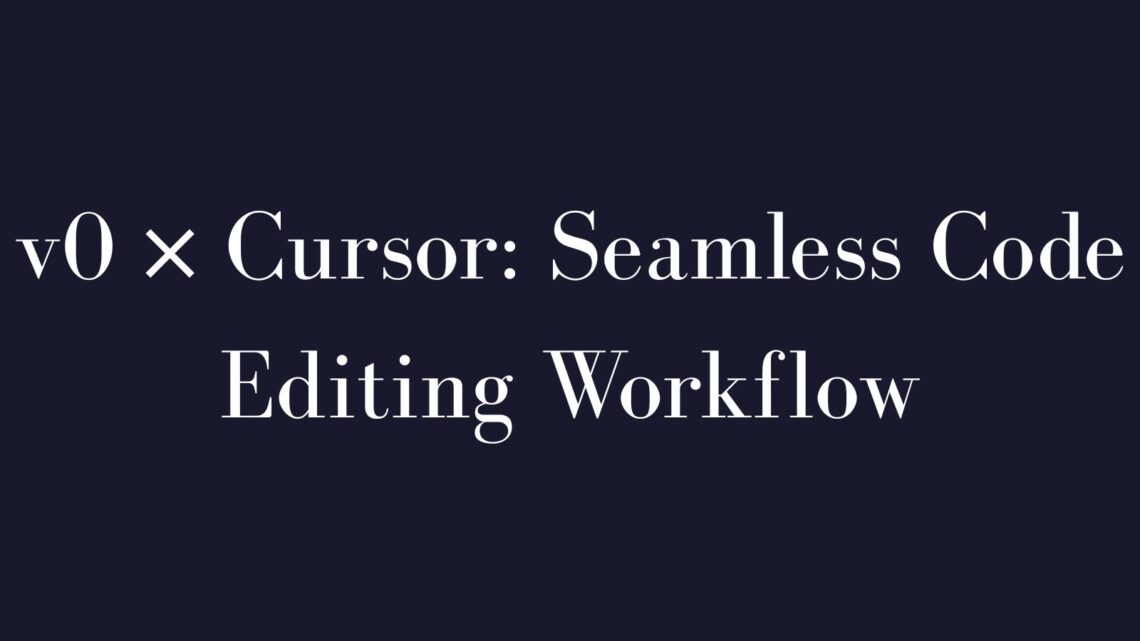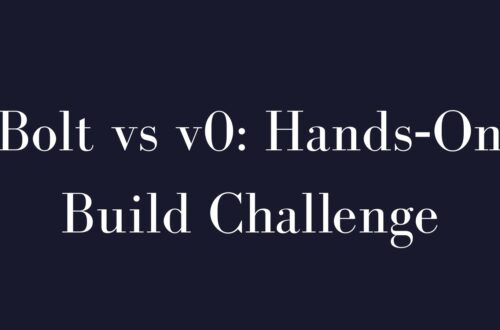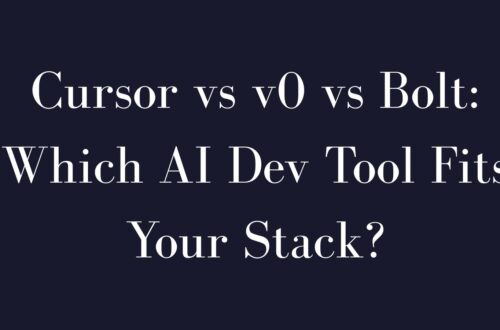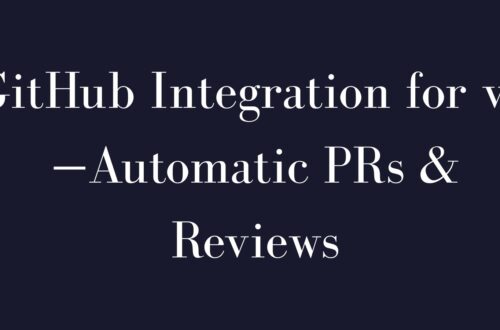Integrating Vercel’s v0 with Cursor creates a powerful workflow, bridging rapid UI generation and AI-driven code refinement. This guide explains the full integration process, including best practices, potential challenges, and community insights for efficiently combining these advanced development tools.
Setting Up Your AI Development Environment
Installing Cursor
- Download: Visit cursor.com.
- Installation: Run installer; default settings typically suffice.
- Initial Setup: Customize shortcuts, language, indexing preferences, and optionally import VS Code settings for a familiar setup.
Pricing Tiers (April 2025)
| Plan | Price | Features |
|---|---|---|
| Hobby | Free | Limited completions, trial features |
| Pro | $20/month | Unlimited completions, premium AI |
| Business | $40/user/month | Central billing, admin dashboard, SSO |
Mastering Cursor’s AI Toolkit (April 2025)
Core AI Features
- Tab Autocomplete: Context-aware completions.
- Chat Panel: Contextual Q&A, external references (@Docs, @Git).
- Cmd-K Inline Edits: Fast code editing and snippet generation.
- Agent Mode: Autonomous task execution for complex edits.
Working with Code Repositories in Cursor
- Use standard Git operations directly within Cursor.
- Leverage @Git/@Branch symbols for AI-enhanced Git context.
- Utilize Cursor Rules (.cursor/rules/*.mdc) for project-specific coding standards and automation.
Generating UI with Vercel v0
Typical v0 Workflow
- Prompt v0.dev with natural language or design files.
- Review interactive previews.
- Iterate with follow-up prompts until satisfied.
Known Limitations
- Variable code quality, hardcoded values.
- Limited handling of complex logic and project context.
- One-way GitHub integration, no bi-directional syncing.
The Cursor + v0 Integration Workflow
Step-by-Step Integration
- Generate UI: Use v0.dev to prototype UI components.
- Transfer to Cursor:
- Recommended:
npx shadcn@latest add <v0_chat_url>. - Alternatives: manual copy-paste, download ZIP.
- Recommended:
- Refine in Cursor: Execute AI-driven refactor cycle.
Clarifying the “Prompt-to-Diff” Myth
No current direct “prompt-to-diff” feature exists between Cursor and v0 (source: community forums).
Refining v0 Code: The Cursor AI Refactor Cycle
Focus areas for refining v0-generated code:
- Replace hardcoded values.
- Break down monolithic components.
- Improve readability and structure.
- Optimize performance and state management.
Use Cursor’s AI:
- Cmd-K: Inline, targeted refactoring.
- Chat: Context-rich code improvements.
- Agent Mode: Complex, multi-file changes.
Community Insights & Best Practices (April 2025)
Common Pain Points & Solutions
| Pain Point | Solutions & Workarounds |
| Code Sync Issues | Manual methods, GitHub integration (one-way) |
| v0 Code Quality | Structured refactor cycles with Cursor AI |
| AI Reliability | Clear prompts, thorough reviews, frequent commits |
| Context Limitations | Explicit context management, external tools (Repomix) |
Pro Tips
- Always specify context clearly using
@mentions. - Commit changes frequently to simplify reversions.
- Treat AI as a junior developer: guide carefully, review critically.
FAQs
Can Cursor automatically sync code with v0?
No, syncing between v0 and Cursor is currently manual or via one-way GitHub integration.
Is Cursor’s AI reliable for production-level code?
Cursor’s AI can significantly assist, but all AI-generated code requires thorough review.
What are Cursor Rules?
Project-specific instructions guiding AI behavior, located in .cursor/rules/*.mdc.





